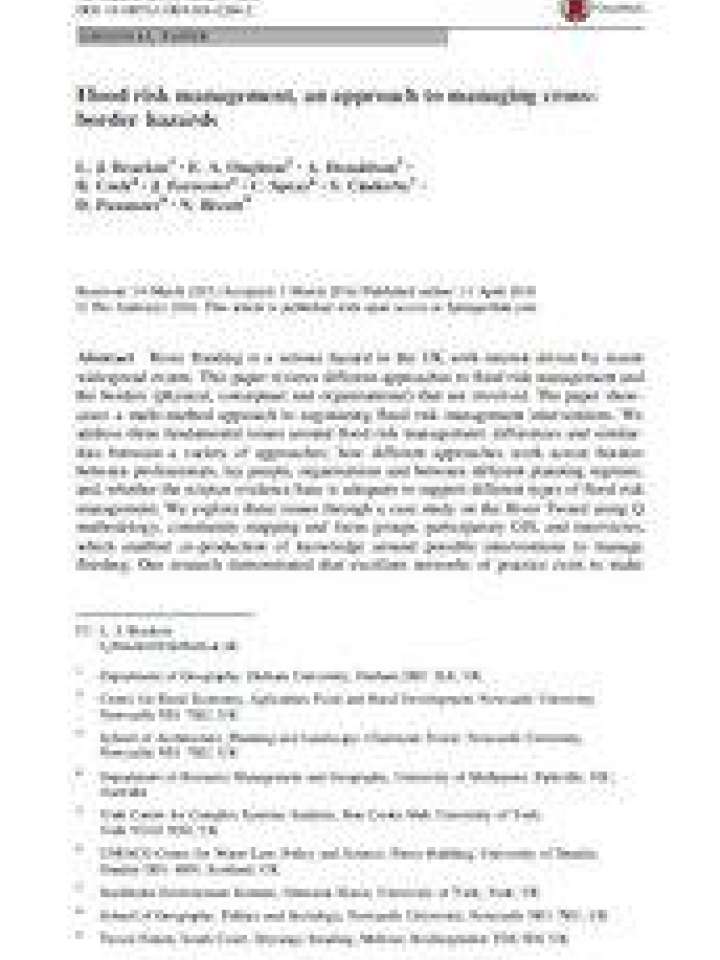Flood risk management, an approach to managing cross-border hazards
River flooding is a serious hazard in the UK with interest driven by recent widespread events. This paper reviews different approaches to flood risk management and the borders (physical, conceptual and organisational) that are involved. The paper showcases a multi-method approach to negotiating flood risk management interventions. Three fundamental issues around flood risk management are addressed:
- differences and similarities between a variety of approaches;
- how different approaches work across borders between professionals, lay people, organisations and between different planning regimes;
- and, whether the science evidence base is adequate to support different types of flood risk management.
These issues are explored through a case study on the River Tweed using Q methodology, community mapping and focus groups, participatory GIS, and interviews, which enabled co-production of knowledge around possible interventions to manage flooding.
The research noted that local people who have no professional responsibility for flood management have excellent understandings of flooding including location, extent and duration and in turn have excellent ideas about possible management interventions to reduce risk, coupled with understanding of what may/may not be acceptable to the local community. This should be harnessed by flood risk managers.
The paper suggests that Q methodology and participatory mapping could be used by organisations to engage with more local knowledge and increase social learning as part of adaptive flood management.
Natural Hazards, June 2016, Volume 82, Supplement 2, pp 217-240
Explore further
